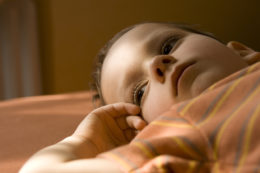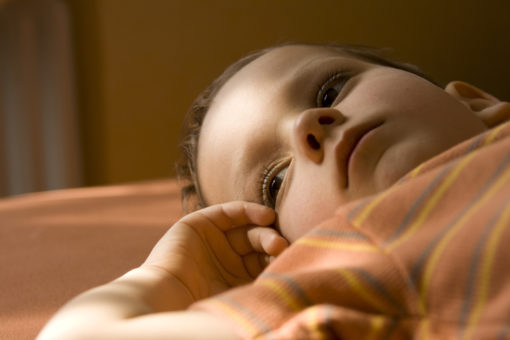
When a child has bipolar disorder, they experience extreme shifts in mood in behaviors that can result in a high, known as a manic episode, or a low, known as a depressive episode. Bipolar disorder is more likely to emerge in the late teen years or in early adulthood, but children, as young as six years of age, can experience it as well. Bipolar disorder is estimated to occur in 1-3% of youth, the majority of whom are adolescents rather than children. Bipolar disorder in children usually presents with signs of mania and depression that are different from adults and therefore diagnosing bipolar affective disorder in children can be difficult. For example, children and adolescents who are experiencing mania are more likely to be irritable and prone to destructive outbursts rather than being elated or euphoric. When depressed, children are more likely to have physical complaints such as headaches, stomachaches, lethargy, irritability, and a decline in academic performance. Additionally, there is a strong genetic component to bipolar affective disorder and therefore children who have parents with bipolar disorder are more likely to inherit this disorder. When one parent has bipolar affective disorder, the risk to each child is 15-30% and when both parents have bipolar affective disorder, the risk increases to 50-75%.
Symptoms of mania in children
- Irritable mood
- Destructive outbursts
- Hyperactivity
- Rapid, pressured speech
- Changes in sleep patterns
- Trouble concentrating
- Talking excessively
- Frequent temper tantrums
Symptoms of depression in children
- Physical complaints such as headaches and stomachaches
- Lack of interest in playing or socializing
- Academic decline
- Fatigue
- Changes in appetite
- Talking about death
Differential diagnoses in children with bipolar affective disorder
Pediatric bipolar disorder is often difficult to diagnosis because children experience different symptoms compared to adults. Additionally, there are multiple behavioral and mental health disorders that look similar to bipolar affective disorder and as a result, many children are often misdiagnosed.
- Disruptive mood dysregulation disorder (DMDD): a new disorder created to more accurately diagnose children who were previously diagnosed with pediatric bipolar disorder, even though they did not experience the episodic mania or hypomania characteristic of bipolar disorder. Disruptive mood dysregulation disorder (DMDD) is a condition in which a child is chronically irritable and experiences frequent, severe temper outbursts that seem out of proportion to the situation at hand. Children diagnosed with DMDD struggle to regulate their emotions in an age-appropriate way. In between outbursts, they are irritable most of the time.
- Attention deficit hyperactivity disorder (ADHD): a developmental condition of inattention and distractibility, with or without accompanying hyperactivity. There are 3 basic forms of ADHD described in the Diagnostic and Statistical Manual, Fifth Edition (DSM-5): inattentive; hyperactive-impulsive; and combined. Sometimes the symptoms of ADHD and mania or hypomania associated with bipolar disorder can be very similar. Kids might exhibit distractibility, talkativeness, difficulty maintaining attention, and loss of social functioning. Clinicians must assess whether it is one condition or whether the disorders are co-occurring. A child may have both ADHD and bipolar disorder if they experience behavioral outbursts, severe mood swings, and impulsive behaviors. The treatment for ADHD is a stimulant, which can worsen manic episodes in children with bipolar disorder therefore bipolar disorder, must be ruled out before a diagnosis of ADHD is made.
- Oppositional defiant disorder (ODD): defined by the Diagnostic and Statistical Manual of Mental Disorders, Fifth Edition (DSM-5) as a recurrent pattern of angry/irritable mood, argumentative/defiant behavior, or vindictiveness lasting at least 6 months. This behavioral disorder usually manifests before eight years of age and is more commonly seen in boys before puberty but is equally seen in boys and girls after puberty. It often co-exists and overlaps with bipolar disorder.
Treatment for bipolar disorder in children
Mood stabilizers and antipsychotics are the first-line medications for individuals with bipolar affective disorder but are used with more caution in the pediatric population because a child’s brain is still developing. Many doctors believe in the theory “start low and go slow” when it comes time to starting medications for children with bipolar disorder. In addition to medication, therapy and school support are highly recommended for children who have been diagnosed with bipolar disorder and studies have shown that medication and therapy when combined have the best treatment results.
